If you’re in need for a savory, delicious side dish for dinner tonight, or a simple vegetarian recipe, look no further. Chock full of ripe tomatoes, peppers, and hearty chickpeas, bulgur pilav (bulgur pilavı) is a fresh and versatile recipe.
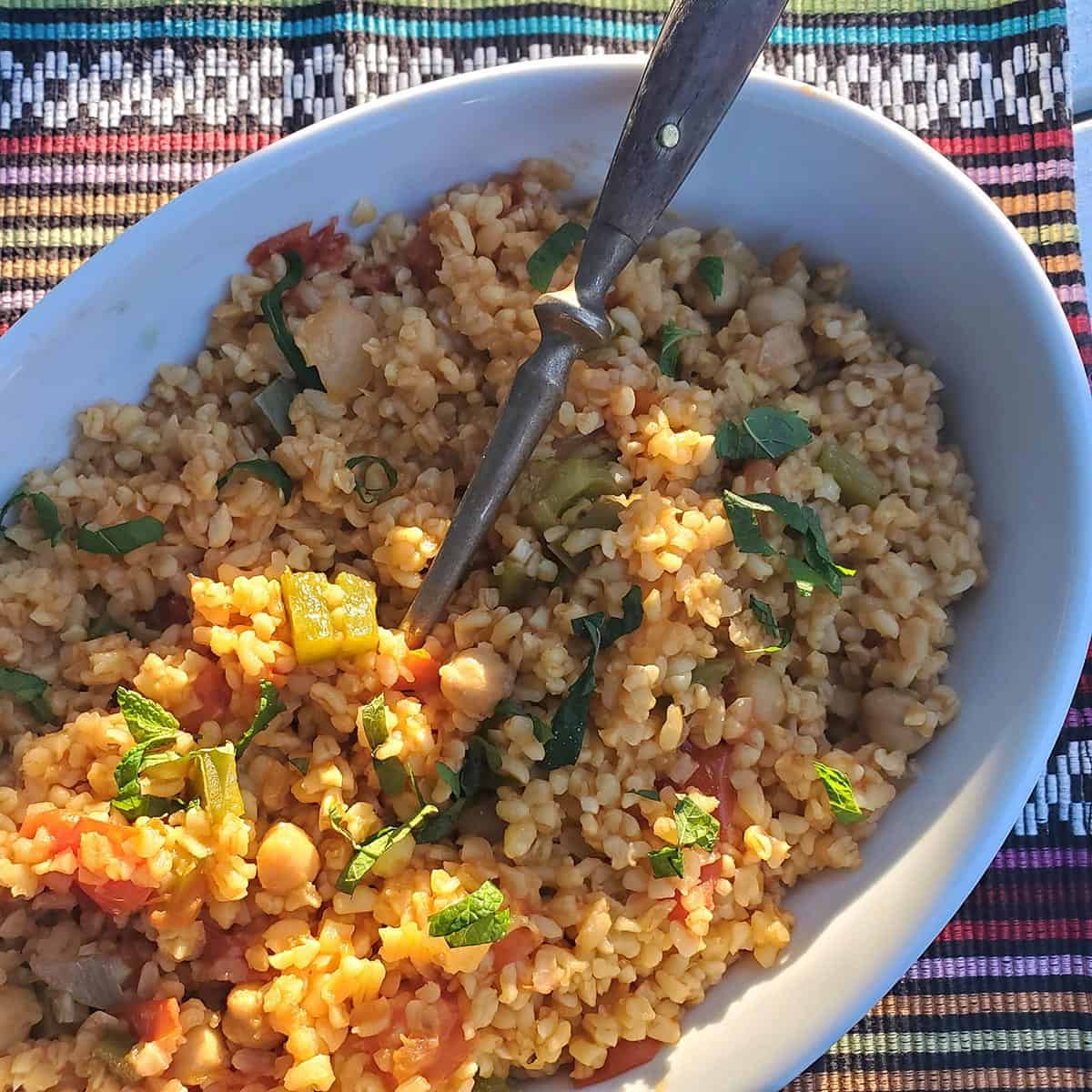
This whole grain cooks so incredibly quickly, so it is just perfect as an accompaniment to a weeknight dinner!
Why You’ll Love This Recipe and What You’ll Learn
To add some variety to our weeknight menu, and as a replacement to our typical pasta and rice, I picked up a bag of bulgur last week. I really wanted my family to enjoy this grain, so opted to use this grain to prepare a Turkish bulgur pilav recipe, one also known as bulgur pilavi. Turkish cuisine is very popular in this part of southern Sweden, and most main meat dishes are served with a side of chewy bulgur pilaf. I really enjoy the heartiness of the grain in combination with the savory tomato and pepper flavors!
I’ve been trying to feed my family more whole grains, because they are so nutritious. In fact, consumption of whole grains correlates with lower lifetime risk of heart disease, cancer, and diabetes.
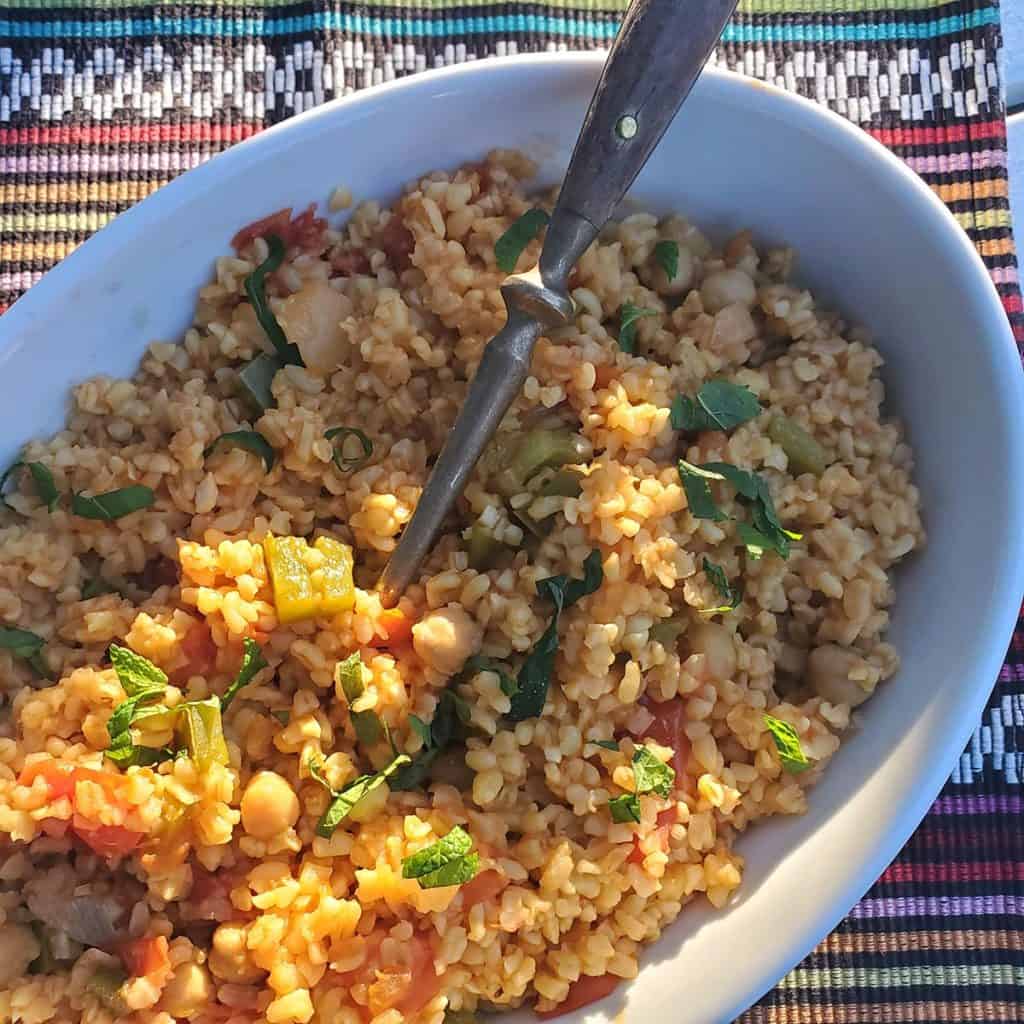
What is Bulgur?
Bulgur is a type of whole grain made from a variety of hard wheat. Specifically, bulgur is made from whole grain wheat kernels that are partially cooked and then dried. Because the grain is pre-cooked, cooking time is fast, about 10 minutes, tops. You may recognize bulgur from popular tangy tabouli (the delicious middle eastern parsley salad), which you can buy, prepared, in almost any supermarket. Bulgur pilav is also known as bulgur pilaf, bulgar pilaf in Turkish, burgul or burghul. No matter what you call it, bulgur has a great, chewy texture and can come in consistencies ranging from fine bulgur to extra coarse bulgur. The variety used in this bulgur pilav recipe is coarse bulgur, almost akin to a chunkier, heartier couscous, but it has a “nutty” flavor.
Is Bulgur Pilav Healthy For You?
Yes, Bulgur Pilav is healthy! This recipe constitutes a super easy recipe, perfect for a healthy pregnancy dinner or pregnancy lunch! Let’s take a closer look at the nutritional highlights of the main ingredients used in this Turkish bulgur pilaf recipe.
Bulgur
During pregnancy, it’s important for pregnant women to consume a variety of whole grain foods. An increasing amount of research shows the various health benefits derived from whole grains. It is recommended that 3 ounces of an adult woman’s grain intake be from 100% whole grains. Bulgur, specifically, is a type of whole grain made from a variety of hard wheat with a nutty flavor.
During the processing of this grain, a very small amount of the grain’s bran is removed, but the wheat germ, where many of the nutrients are stored, is left intact. One cup of cooked bulgur supplies B vitamins, and a respectable amount of iron and magnesium. Bulgur is also low in fat and cholesterol-free. As far as protein and fiber, 100 grams of bulgur offers 3g of protein and 4.5g of fiber. Adequate fiber intake during pregnancy helps a pregnant woman to maintain a healthy pregnancy weight.
Tomatoes
Tomatoes provide many health benefits to a pregnant woman. This delicious fruit is full of essential vitamins and fiber. Low in calories, tomatoes do not contain fat, yet they are full of antioxidants. Tomatoes contain vitamins C, A, and B6, along with iron, potassium, and manganese. Importantly, tomatoes offer a pregnant woman lycopene. Lycopene can delay cataracts, improve bone health, delay age related brain disease and reduce pain from nerve and tissue damage. In fact, cooked tomatoes have been shown to provide higher levels of lycopene than raw tomatoes, which only allow 4% absorption of lycopene.
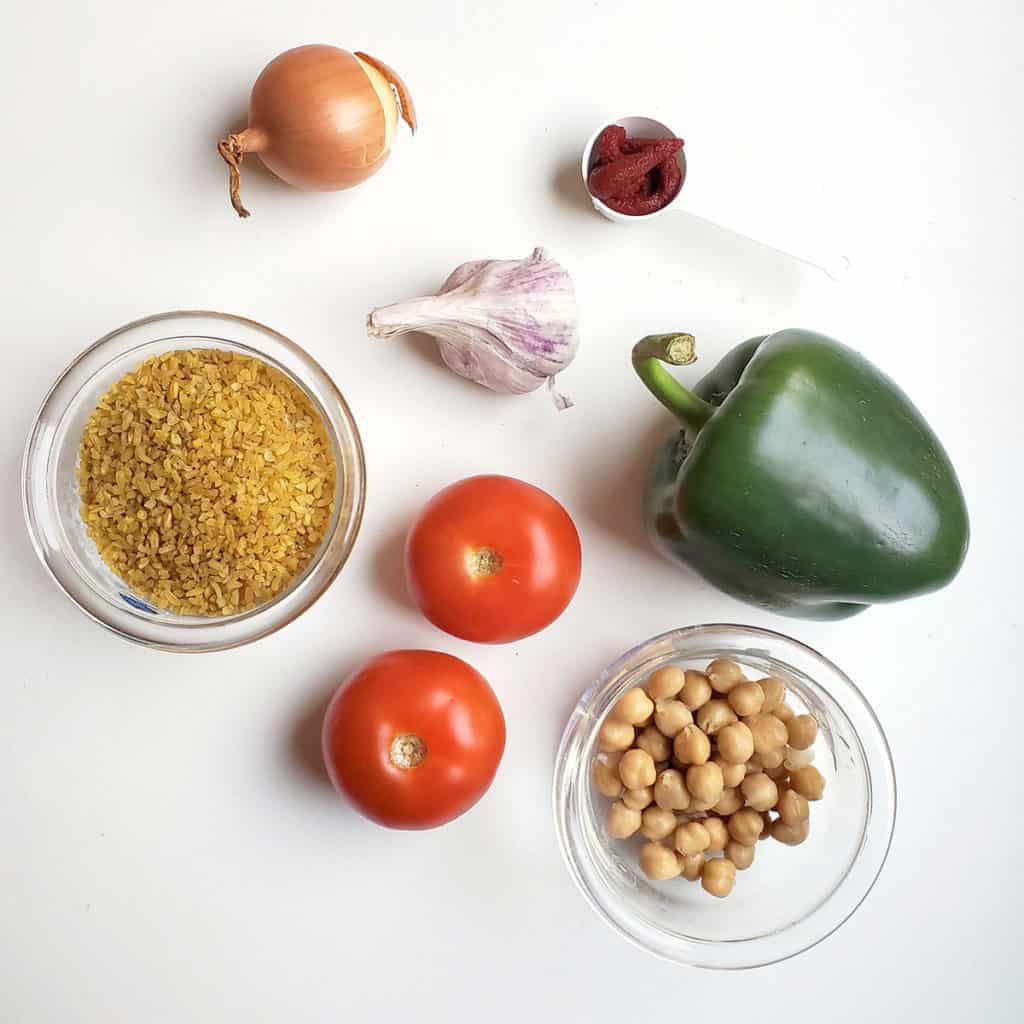
Tomatoes are a source of other carotenoids as well, including beta-carotene. Beta carotene is an antioxidant that body transforms into Vitamin A. Vitamin A has an important role in the healthy development of the fetus and the newborn, with lung development and maturation being particularly important.
Note that for this recipe we leave the tomato skins on the tomato because the skin actually contains the highest concentration of nutrients!
Green Pepper
Bell peppers are an excellent source of Vitamin C. Adequate consumption of this vitamin support baby’s growth and improves iron absorption. For mama, bell peppers contain antioxidant flavonoids that prevent the oxidation of essential fats within the cells of the brain. This means that the brain will retain more of those essential fats necessary for optimal brain function. The folate (also known as folic acid in its synthetic form) that is found in bell peppers can help reduce certain birth defects of the brain and spinal cord by more than 70 percent.
Garbanzo Beans (Chickpeas)
Garbanzo beans (also known as chickpeas) are a good plant source of protein, calcium, and folate. The calcium in garbanzo beans helps support the growth of baby’s bones and teeth. Importantly, some research suggests that chickpeas may play a beneficial role in weight management and glucose and insulin regulation, as well as have a positive impact on some markers of cardiovascular disease. The importance of protein during pregnancy cannot be overstated. As a plant food source, garbanzos offer a respectable amount of protein: 1 cup of drained, rinsed garbanzo beans offers 10.7g of protein.
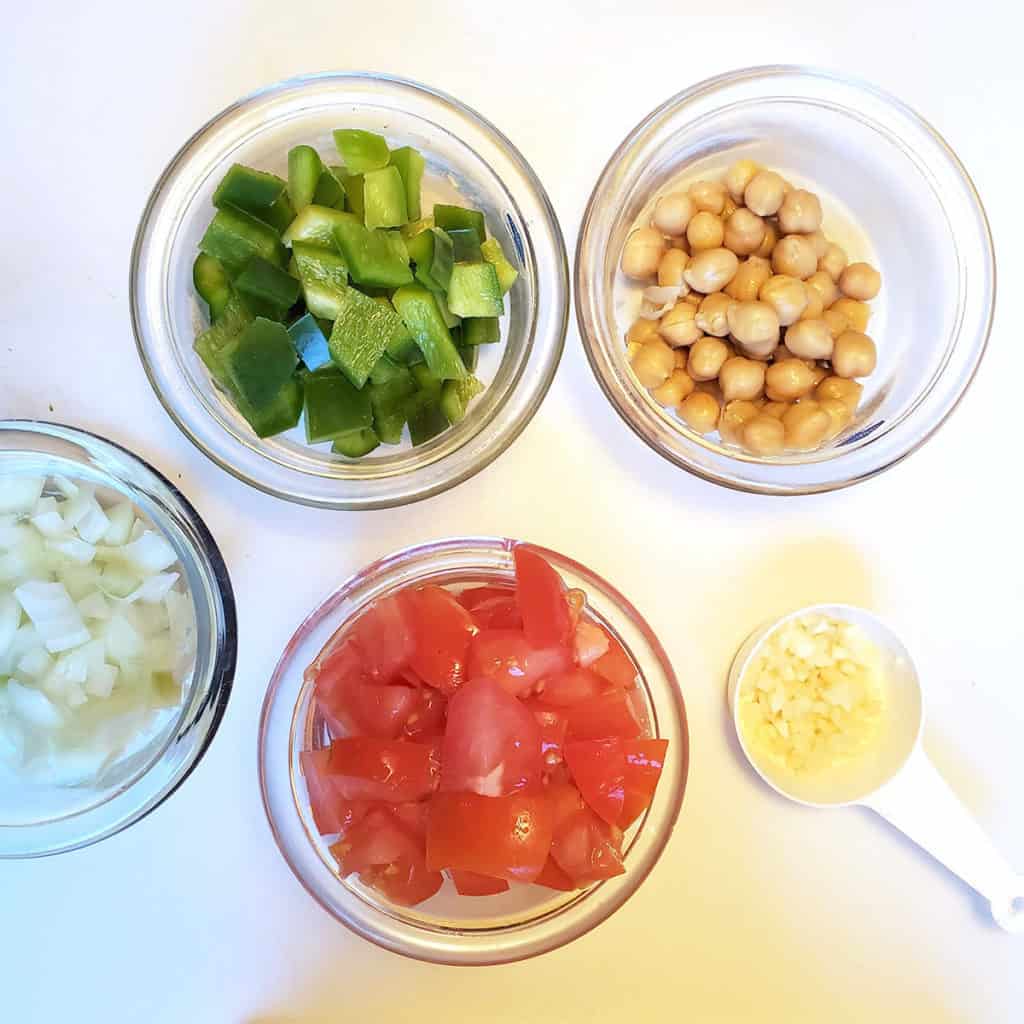
Key Ingredients
Coarse bulgur, 1 cup rinsed (200 grams)
Tomato, 1 cup, diced (200 grams)
Green pepper, 1 large, diced (150 grams)
Onion, 1 medium, diced (25 grams)
Tomato paste, 1 tablespoon
Vegetable broth, 1 cup (2.33 dl)
Garbanzo beans / Chickpeas, 0.5 cup (80 grams)
Garlic, 2 cloves, minced
Salt, 1 teaspoon
Olive oil, 1 tablespoon
How to Make Bulgur Pilav
Step 1: Prepare all of the vegetables
Rinse the vegetables well and then dice the tomato and green bell pepper. Peel the onion and dice. Peel and mince the garlic cloves. Set the vegetables aside.
Step 2: Rinse the bulgur
Ensure that you rinse the bulgur thoroughly so as to eliminate any unwanted impurities (sand, stones, etc.) from processing. Bulgur can be purchased from many brick and mortar stores as well as online.
Step 3: Sauté the aromatics
In a medium Dutch oven or larger soup pot, sauté the garlic and onion in the olive oil for two minutes over medium hear. Add in the green bell pepper and give a stir, using a wooden spoon. After 2 additional minutes, add in the tomato paste and stir. The tomato paste adds a beautiful color to the grains.
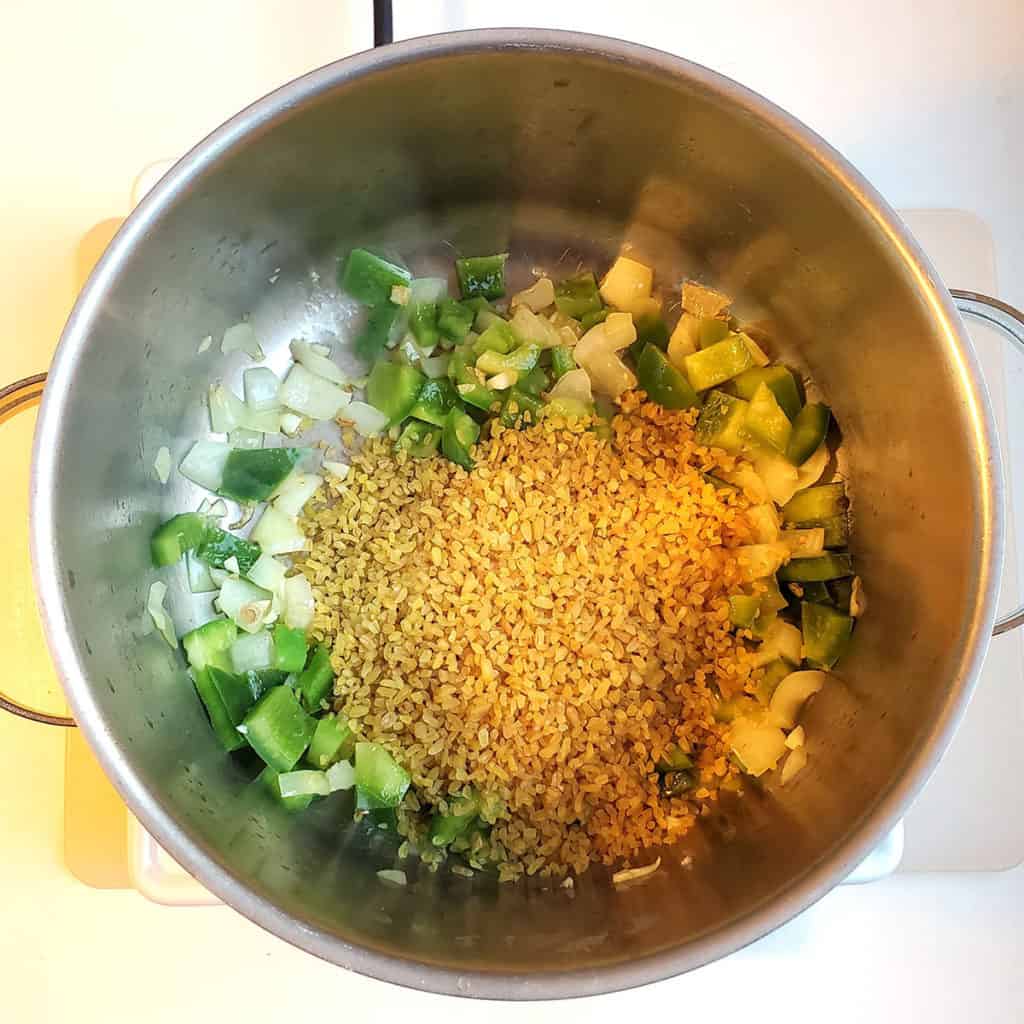
Step 4: Add in the remaining ingredients
Once the onions and peppers are soft, add in the bulgur and salt, and stir for 2 minutes. Next, add in the tomatoes and chickpeas. We add these last because of their more delicate texture. Pour in the vegetable broth. Bring to a boil and then reduce heat to low.
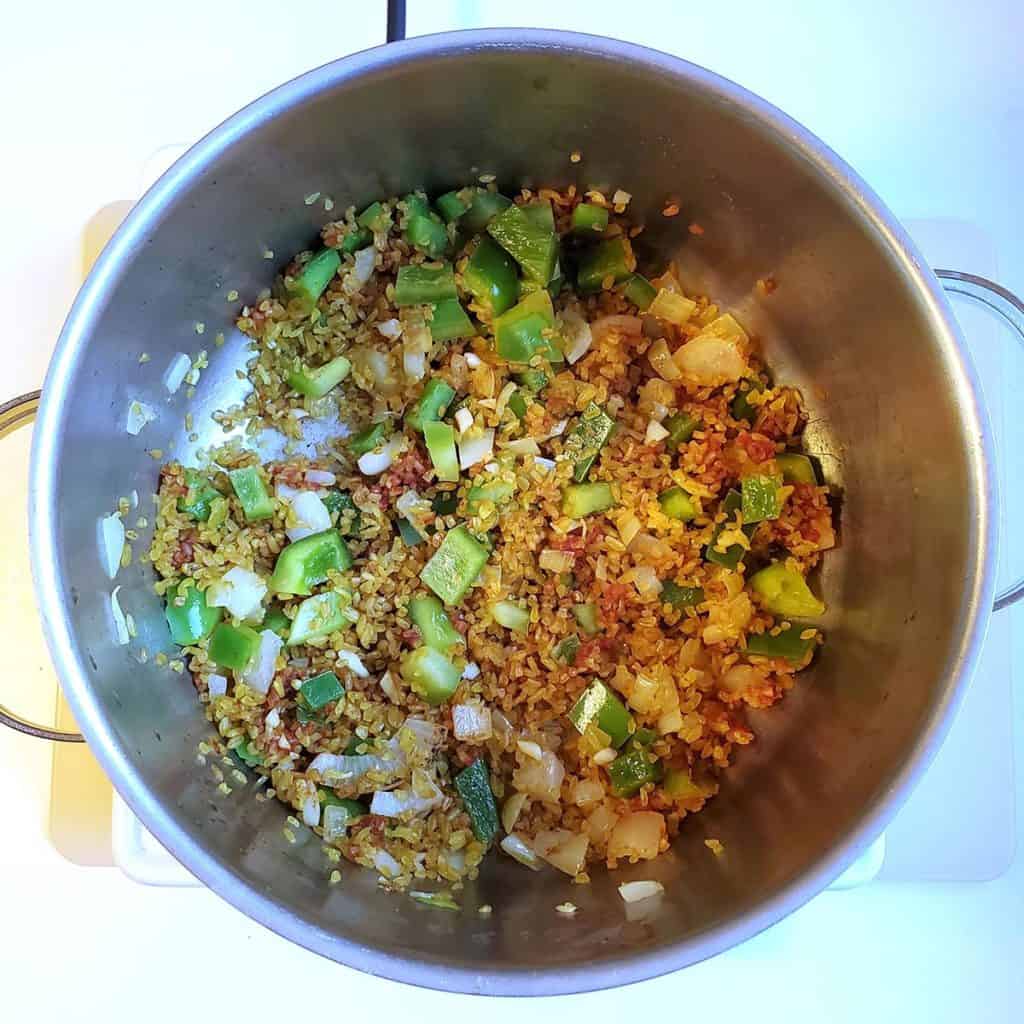
Step 5: Simmer
After reducing to low heat, cover for 10 minutes.
Step 6: Fluff and serve
After 10 minutes, remove the cover and turn off the heat. No liquid should remain. Let the grains sit for 5 minutes, then fluff up with a fork, and serve!
This grainy, wheat dish is so delicious because of the variety of textures and flavors! Plus, with all the health benefits that this bulgar pilaf has to offer, you’ll want to make it part of your weekly rotation!
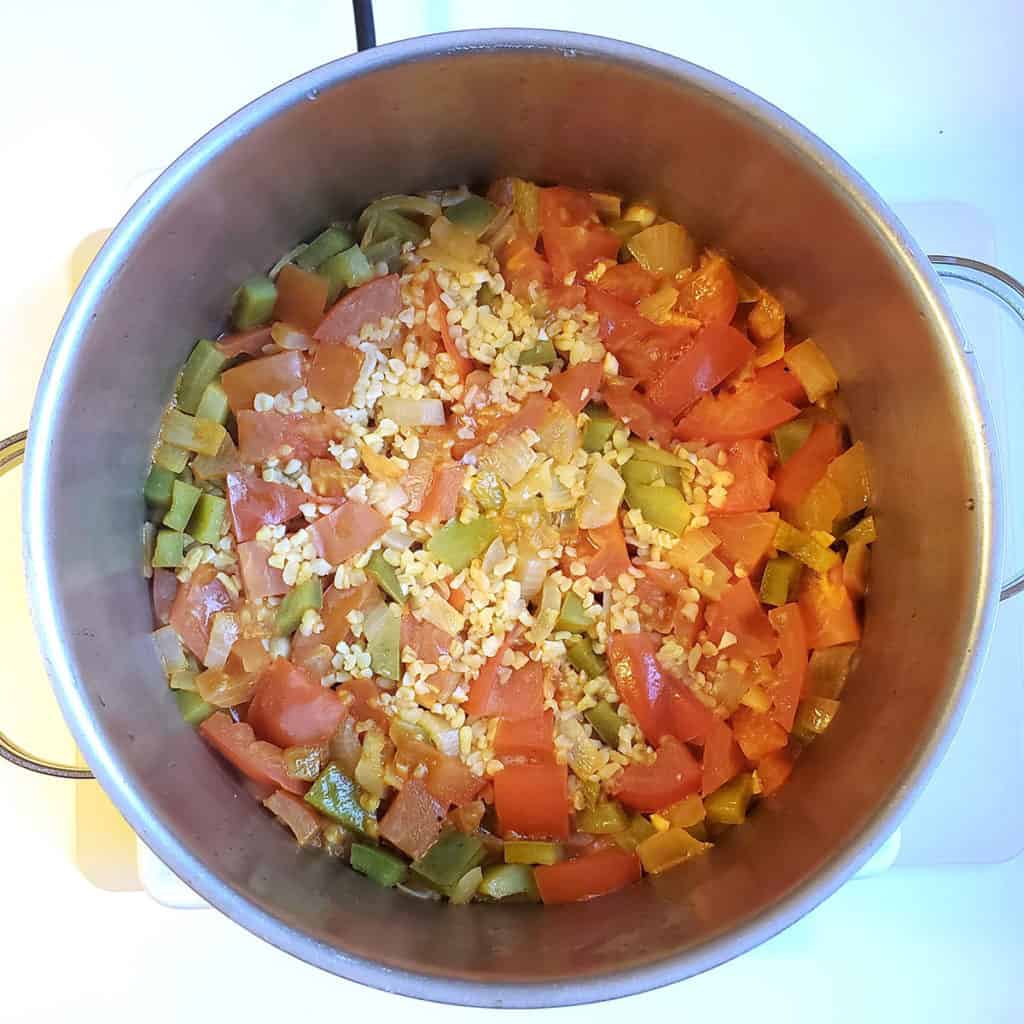
Serving Suggestions
Turkish bulgur pilav is so delicious on its own, but is especially good with:
- Flaky white fish such as rockfish
- A juicy grilled steak
- Zaatar roasted chicken breast
- A scoop of Greek yogurt
Make Ahead and Storage
Refrigerator: Store this Turkish bulgur pilav in the fridge for up to 5 days, as long as it did not sit out for more than an hour after cooking. Store in an airtight container.
- Reheat: Reheat the bulgur pilav in a microwave-safe dish in the microwave for 1 minute or until the pilaf is hot.
Freezer: Store this Turkish bulgur pilav in the freezer for up to 3 months, as long as it did not sit out for more than an hour after cooking. Prior to freezing, spread out the cooled grains within a Ziploc bag. These reusable Ziploc bags are food safe and take up very little room in the freezer.
- Reheat: Reheat the frozen bulgur pilav in a microwave-safe dish in the microwave for 1 – 2 minutes or until the pilaf is hot.
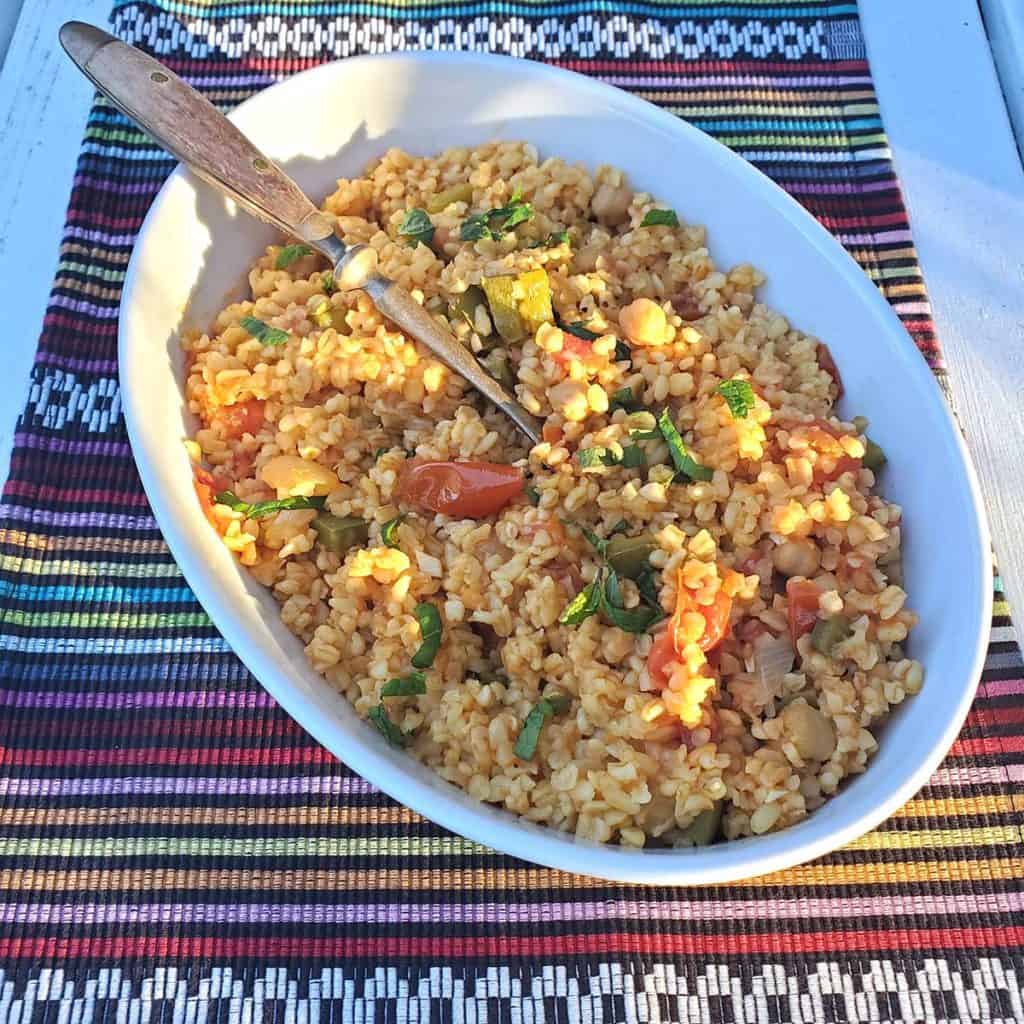
Frequently Asked Questions (FAQs)
What is a pilaf?
A pilaf (or pilav) is grain dish in which the grains cook in boiling water that has both flavorings and aromatics added. Common examples of these additions are garlic, cinnamon, onion, meat stock, or vegetable broth. The final texture is fluffy, often with some pieces offering texture (think chickpeas or diced onion).
What is the difference between pilaf and risotto?
Pilaf is a fluffy, drier grain dish that has clear separation between the individual grains, whereas risotto is a creamy, wet dish in which the grains melt together due to a higher liquid-to-grain ratio.
What is the difference between couscous and bulgur?
Couscous is actually a pasta made of semolina (durum wheat) that is popular in north Africa. The textures can also range from very fine, to very coarse (appearing like little pearls). Bulgur is not a type of pasta, but are actually whole grain kernels of wheat. Neither couscous nor bulgur is gluten free.
Can I make this recipe spicy?
Yes, if you prefer a spicier flavor, kick things up with a teaspoon of smoked paprika (hot or mild). Add it in along with the salt.
You’ll Also Love These Related Vegetarian Pregnancy Recipes
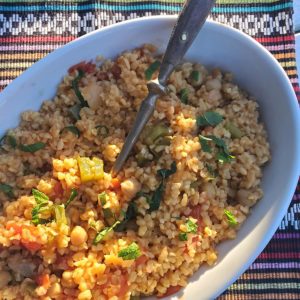
Bulgur Pilav (Pilaf)
Author:Ingredients
- 1 cup coarse bulgur, rinsed
- 1 cup vegetable broth
- 1 cup tomato, diced
- 1 cup green pepper, diced
- 1/2 cup garbanzo beans / chickpeas
- 1 onion, diced
- 1 tbsp tomato paste
- 2 cloves garlic, minced
- 1 tsp salt
- 1 tbsp olive oil
Instructions
- Rinse the vegetables well and then dice the tomato and green bell pepper.
- Peel the onion and dice.
- Peel and mince the garlic cloves.
- Rinse the bulgur.
- In a medium Dutch oven, over medium heat, sauté the garlic and onion in the olive oil for two minutes.
- Add in the green bell pepper and give a stir, using a wooden spoon.
- After 2 additional minutes, add in the tomato paste and stir.
- Once the onions and peppers have softened, add in the bulgur and salt, and stir for 2 minutes.
- Next, add in the tomatoes and chickpeas.
- Pour in the vegetable broth. Bring to a boil and then reduce heat. Cover for 10 minutes.
- After 10 minutes, remove the cover and turn off heat. Let the grains sit for 5 minutes, then fluff up with a fork, and serve!

Leave a Reply